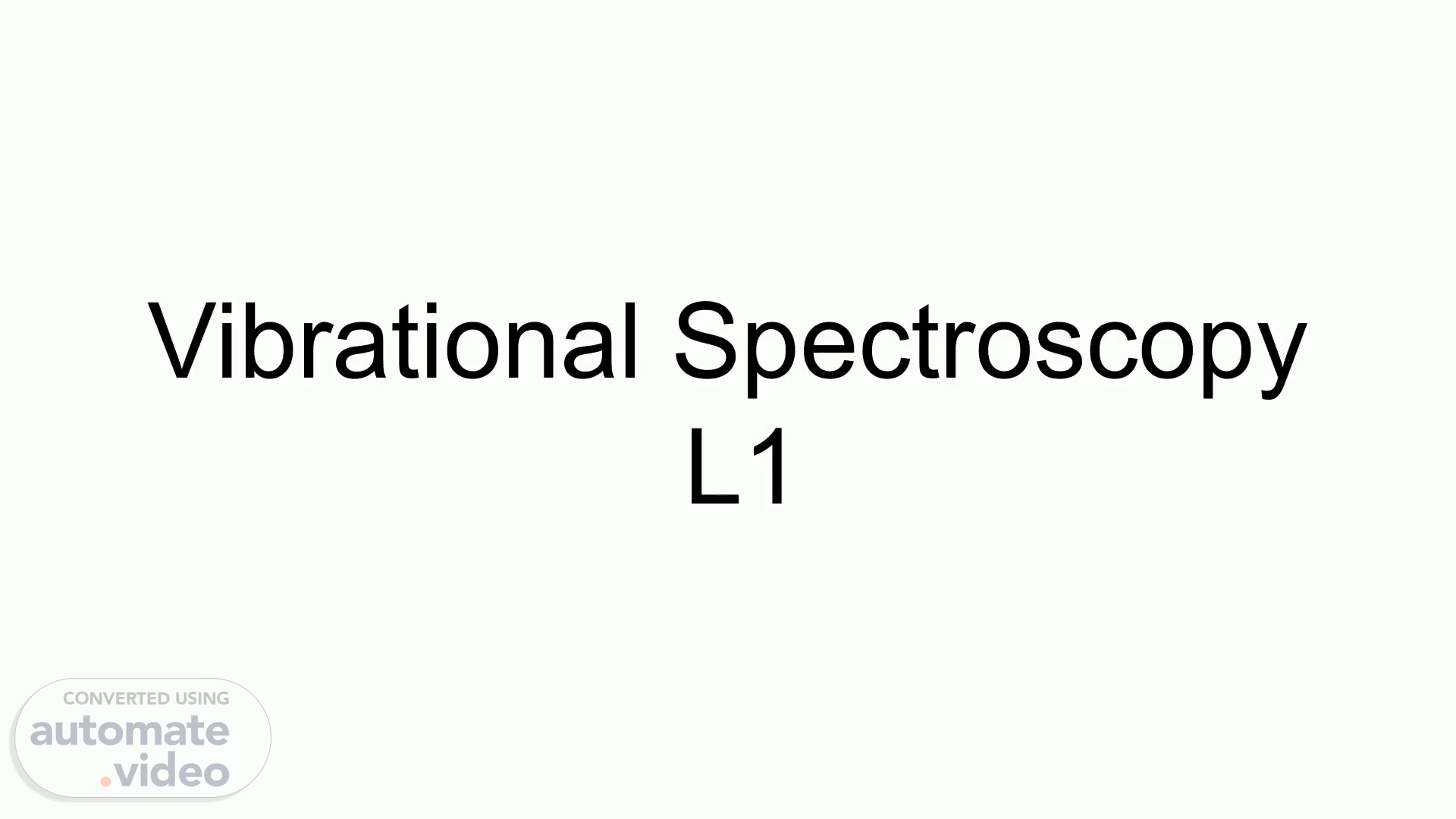
Vibrational Spectroscopy, L1
Scene 1 (0s)
. . Vibrational Spectroscopy. L1.
Scene 2 (6s)
. . Infrared Range. infrared spectrum Inm x-rays 1 pm gamma-rays -12 mg 1 mm micrmvaves 10S wavelenght Im radio short wave hard -10 ultra- violet soft 166 14.5 125 8.5 65 1 km wave 4.5 log wavelenght (m) log frequercy (Hz) visible spectum.
Scene 3 (17s)
. . Which Molecules show IR spectra. Heteronuclear diatomic molecules like HCI, CO, NO etc. and.
Scene 4 (33s)
. . How the dipole moment changes with vibration.
Scene 5 (41s)
. . Molecular vibration can be modeled by balls attached by springs..
Scene 6 (57s)
. . Symmetric stretching vibration at 3652 cm-1 O Anti-symmetric stretching vibration o at 2349 cm-1.
Scene 7 (1m 6s)
. . Different types of vibrational Modes present in a molecule.
Scene 8 (1m 13s)
. . TYPES OF VIBRATIONS Stretching Mode Symmetric In plane bending vibrations Scissoring Rocki ng Out plane bending vibrations Asymmetric Wagging 12 Twisting.
Scene 9 (1m 21s)
. . Stretching mode of vibration. Symmetric Stretching.
Scene 10 (1m 31s)
. . Bending Mode of Vibration. q p ox (Doxp q p Scissoring Twisting Rocking Wagging.
Scene 11 (1m 39s)
. . Frequency of vibration of a diatomic vibrator.
Scene 12 (1m 57s)
. . How the. vibrational. energy values. originate.
Scene 13 (2m 11s)
. . .
Scene 14 (2m 17s)
. . Classical equation of vibration: Derivation. A B.
Scene 15 (2m 26s)
. . A B. m1 m2. re. x1 x2. f1 f2. Total displacement= x=(-x1)+x2=x2-x1 Applying Hook’s Law;.
Scene 16 (2m 48s)
. . x1=A1Cos(2π?t+?) x2=A2Cos(2π?t+?). Here A1 and A2 are the amplitudes, ? is the linear frequency and ? is the phase of the vibration. Thus the accelerations would be;.
Scene 17 (3m 7s)
. . On simplifying equations 1 and 2 we get. (K-4π2?2m1)A1=KA2 3.
Scene 18 (3m 23s)
. . Thus the frequency of the vibrating molecule is given as.
Scene 19 (3m 34s)
. . Thank you for patient hearing.